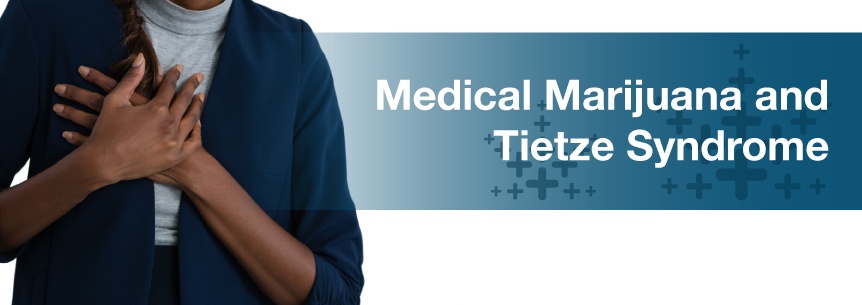
If you suffer from Tietze syndrome, you know the pain and swelling is very real. Your quality of life may be reduced, and you may regularly find yourself taking anti-inflammatories in the hopes of reducing your pain. But, these medications can have side effects, including irritation to the lining of your stomach. Thankfully, medical marijuana and Tietze syndrome is now being researched, and cannabis could be an effective alternative treatment for the condition.
Medical marijuana for Tietze syndrome may be effective for the condition’s symptoms, such as anxiety, inflammation and pain. We’ve seen clinical evidence of cannabis’s anti-inflammatory properties.
Medical weed can also calm anxiety and panic conditions due to its soothing emotional effect. If you’re suffering from Tietze syndrome, you may want to consider cannabis and Tietze syndrome treatment if you live in a state where medical marijuana is legal.
Find A Doctor Find A Dispensary
Pain, inflammation and anxiety are three areas medical marijuana can help the Tietze syndrome patient.
The pain caused by Tietze syndrome appears to be caused by inflammation. In a study published in “Anaesthesia” on the efficacy of medical marijuana for chronic pain, the authors found encouraging trends overall when subjects used THC and THC:CBD was encouraging. The authors admitted that although they anticipated CBD by itself would have little effect in the study, it might have other roles in therapy, especially in pain related to inflammation.
THC is one of the active components of the marijuana plant — tetrahydrocannabinol. CBD is another active component — cannabidiol. Both of these substances have been tested and have proven useful in treating pain. Because this study found a promise for the use of medical marijuana for inflammatory pain shows, it could be particularly helpful for individuals with Tietze’s syndrome.
A study published in 2005 by the Oxford University Press showed even better results when treating rheumatoid arthritis with medical marijuana. Rheumatoid arthritis, like Tietze’s syndrome, is a condition involving painful inflammation of the joints. The study involved 58 patients and took five weeks to complete. Twenty-seven of the patients received a placebo. The patients given the medical marijuana product Sativex had greater pain relief than those given the placebo.
A pre-clinical study done on inflammation in rat’s paws showed the CBD (cannabidiol) could improve certain symptoms of inflammation. The study’s abstract revealed cannabidiol, taken orally, has a beneficial effect on edema and hyperalgesia. Edema, also known as dropsy or pitting, is flesh retaining the shape of an object when applying pressure to a swollen area. Hyperalgesia is pain sensitivity.
Sufferers of Tietze’s syndrome can benefit greatly from the latter finding, as the primary complaint of the condition is the pain. Other studies in humans have shown relief from inflammation in conditions like Chron’s Disease as well.
As mentioned above, the symptoms of Tietze’s syndrome can be distressing and cause anxiety and panic attacks. The condition can last for a few weeks or months in non-chronic cases. If the anxiety persists while symptoms occur, it may require treatment. Medical marijuana is approved in several states for use as an anti-anxiety treatment. However, anxiety is one of the few distressing symptoms of medical marijuana. In other words, it can have the opposite of the desired effect. Nonetheless, research shows numerous medical marijuana patients get relief from their anxiety with the drug.
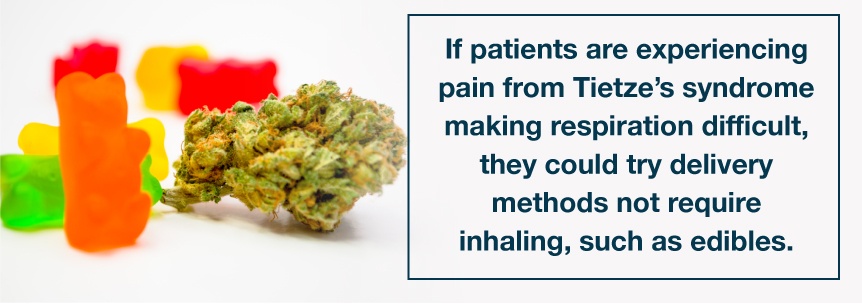
If patients are experiencing pain from Tietze’s syndrome making respiration difficult, they could try delivery methods not require inhaling, such as eating the plant in food or taking a pill form of a marijuana derivative.
Some good strains of cannabis for Tietze syndrome include the following:
Strains high in both CBD and THC concentrations work well for treating Tietze syndrome-related pain. A couple of examples of these strains are:
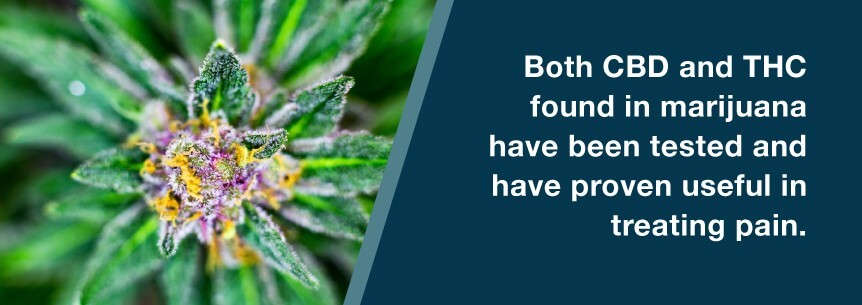
Other pain-fighting strains include:
CBD-rich strains of medical cannabis often work well for helping to ease inflammation and its effects, such as pain and spasms. Try these inflammation-fighting strains:
When inflammation is causing the pain, specific strains of cannabis could be more beneficial. This is because THC alone doesn’t necessarily decrease inflammation. What does decrease inflammation is the THCa which is the non-psychoactive, acidic form of THC. You will get the most anti-inflammatory benefit from this cannabinoid by not heating it when you consume it.
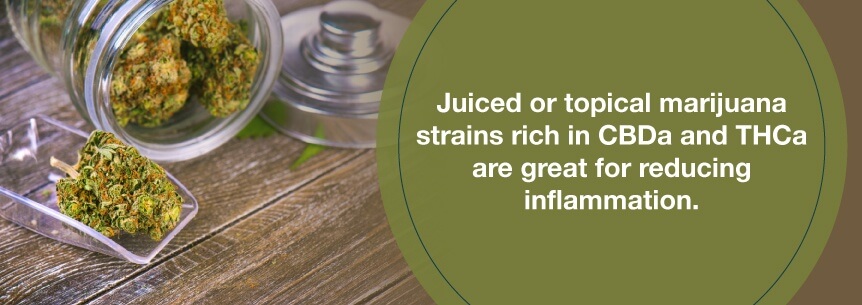
Juiced or topical marijuana strains rich in CBDa and THCa are great for reducing inflammation. A couple of examples are LA Confidential and Good Medicine.
THC, at high levels, can increase anxiety in some people because of its psychoactive properties. Therefore, if this is the case with you, you may want to use CBD which isn’t psychoactive and successfully reduces anxiety. It may take some trial and error to find the perfect strain.
You’ll just want to choose a strain that has enough CBD in it to control your anxiety. You need to go with strains where either the CBD balances out the THC or the CBD levels are higher. Some good weed strains high in CBD that may help your anxiety include:
Before diving into the delivery methods, it’s a good idea to have a little knowledge about how marijuana engages with the endocannabinoid system (ECS) of your body. Your ECS is a vast network that regulates specific functions of your body and maintains optimum balance.
It plays a substantial role in numerous bodily functions, such as:
Medical pot engages your ECS by connecting to certain cell receptors, sort of like a key fitting into a lock. Marijuana produces various effects in your body, but the way in which you ingest the herb is the deciding factor of how your body will use it.
You have several options for consuming cannabis. Therefore, it can be difficult to know the absolute best consumption form, particularly since new methods of delivery and marijuana consumption are popping up almost daily. Here are some to get you started:
The oldest method is smoking. However, vaporizers are gaining some traction in popularity. Vaporization allows you to experience almost immediate relief, like you do with smoking the herb, but without the potential risks. Vaporizing heats weed to the point where it releases the resin but doesn’t burn the plant material. Because of this, vaporizing reduces the amount of free radicals that can cause cell damage, promote aging and give off a carcinogenic ash.
You can also get your THC, CBD, CBN and CBG through edibles. Edible marijuana is among the most potent delivery method. Your liver metabolizes the cannabis through edibles, unlike when you inhale the herb. And, this means your body is converting the THC into more useable forms.
Your body will produce a specific metabolite known as 11-hydroxy-THC when you consume an edible. This THC metabolite can be as much as five times more psychoactive than THC, crossing the blood-brain barrier easier and potentially providing you with a very potent high.
Edibles lack THC bioavailability. That means when you’re consuming an edible, it isn’t the THC itself that’s providing you with the relief or high. It’s the powerful metabolite.
Other methods include:
You’ll likely come across a whole variety of ways to consume cannabis if you’re breaking the methods down by tools like pipes, bongs, etc. You can eat, drink, vape or smoke the herb or apply it to your skin. You’ll be the only person who can decide which method is best for you. It may just come down to price, convenience and effects.
Regardless of the strains of marijuana for Tietze syndrome you choose for your treatment, you still need to consult with a licensed medical cannabis doctor to receive your recommendation. You’ll also require a reliable and reputable dispensary to obtain your medical marijuana.
You can accomplish both through MarijuanaDoctors.com. Here, you can browse our list of qualified cannabis doctors and book your appointment. It’s a simple process to get started quickly with your medical cannabis for Tietze syndrome treatment and improve your quality of life.
Find A Doctor Find A Dispensary
Tietze syndrome is a type of inflammatory disorder marked by swelling of your rib cartilage and chest pain. The condition goes by other names, including costosternal syndrome, costosternal chondrodynia or simply chest wall pain. Those with the condition experience swelling in the cartilage joining the upper rib and breastbone, in an area known as the costochondral joint.
Tietze syndrome is sometimes confused with costochondritis. They’re two separate conditions, but they are similar. Both conditions have similar symptoms and involve inflammation of the costochondral joint. However, where swelling is characteristic of Tietze syndrome, costochondritis doesn’t involve swelling. Where costochondritis is more widespread, Tietze syndrome is more localized. Still, both disorders are often thought to be chest wall pain or syndrome subtypes. They’re both described as musculoskeletal chest pain causes.
In addition to swelling, Tietze syndrome can cause pain similar to what individuals sometimes experience during certain heart conditions, like a heart attack.
There’s no known cause of Tietze syndrome or costochondritis, but some patients have noticed their symptoms after experiencing:
Some researchers believe small chest wall injuries could contribute to developing the condition. Known as microtraumas, these injuries are typically too small to result in any noticeable outside damage, but they could cause swelling or damage to your ribs. Sudden events, like an unexpected surgery or a car accident, could cause microtraumas. Chronic small traumas, such as those caused by frequent vomiting or coughing, could also lead to developing Tietze syndrome.
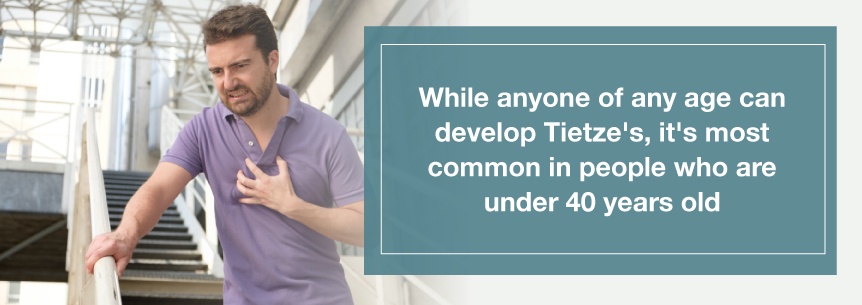
While anyone of any age can develop Tietze’s, it’s most common in people who are under 40 years old. Both women and men can develop either condition as well as children. In about 70 percent of individuals with Tietze syndrome, only one joint is affected unilaterally.
On the other hand, costochondritis commonly affects those over 40 years old, and it usually affects more than one rib.
Doctors and researchers don’t think you inherit Tietze syndrome. Most cases of the condition develop in individuals who don’t have a family history of the disorder. Psychological stress may cause chest muscle contraction that exacerbates the condition, but no evidence suggests it directly causes it.
Chest or breast radiation therapy patients tend to suffer from this syndrome as well, which occurs right after they have therapy or sometimes years later.
As mentioned, swelling and chest pain are the primary symptoms of Tietze syndrome. These symptoms can occur suddenly and go away just as quickly. Or, they can come on slowly and continue for years. It’s possible the swelling will continue even after your pain goes away.
The pain you experience with Tietze syndrome can extend to areas like your shoulders, arms or neck. It can be dull or sharp, mild or severe. Some individuals state it feels like a knife is stabbing them. Tietze syndrome pain can get worse from things like:
You may mistake the pain you’re experiencing for a heart attack. However, a heart attack may affect a broader portion of your chest, while Tietze syndrome tends to affect a small chest area. Heart attacks also often present with nausea, shortness of breath and sweating, which is atypical of Tietze syndrome.
Since its symptoms are similar to those of a heart attack and other problems, though, Tietze syndrome is often difficult to diagnose. The symptoms may appear like those of angina — chest pain caused by your heart muscles not getting enough oxygen. They can also be similar to those of:
Since there isn’t a specific test for diagnosing Tietze syndrome, physicians generally ask about the symptoms you’re experiencing. They’ll likely perform a physical exam, which will probably involve them pressing on your chest. They might also order testing such as the following to rule out other conditions:
Tietze syndrome is a benign disorder that tends to go away on its own after a while, even though it can cause debilitating pain. But, it can also develop into a chronic condition. The chest pain associated may seem similar to angina pectoris — usually accompanying heart disease. It can cause:
It can also cause pain due to hypertension or high blood pressure. Sometimes the pain might feel far worse than what you experience with costochondritis.
When left untreated, long-term pain from Tietze syndrome can be debilitating. Generally, treating the pain and inflammation will eventually cause the condition to go away. Your pain may come back with chronic Tietze syndrome or costochondritis, even with treatment, when engaging in certain activities, such as exercise. You’ll likely require long-term care in these cases to ensure the condition doesn’t affect your ability to perform daily tasks or affect your quality of life.
Tietze Syndrome statistics include:
Tietze syndrome symptoms usually aren’t severe, and, as mentioned, they often resolve on their own without treatment. In some cases, individuals can simply deal with the pain once they learn they aren’t having a heart attack.
The doctor may recommend nonsteroidal anti-inflammatory drugs (NSAIDs), like aspirin, ibuprofen or naproxen to ease the swelling and pain. These come with side effects, though, such as stomach pain, heartburn, ulcers and more. They may also worsen other health issues or interact with other medications you’re currently on, so you should consult with your doctor or pharmacist before taking any OTC medications.
Your doctor may prescribe painkillers for debilitating chest pain, or if you’re experiencing severe pain, the doctor may suggest corticosteroid injections directly into the joint area to decrease the swelling and pain. These injections are fine only a couple of times. Otherwise, you risk joint damage.
Other helpful things include:
Your physician may also recommend psychological treatment since the symptoms of Tietze syndrome can cause anxiety, fear and even panic of immediate death as the pain is often confused with a heart attack.